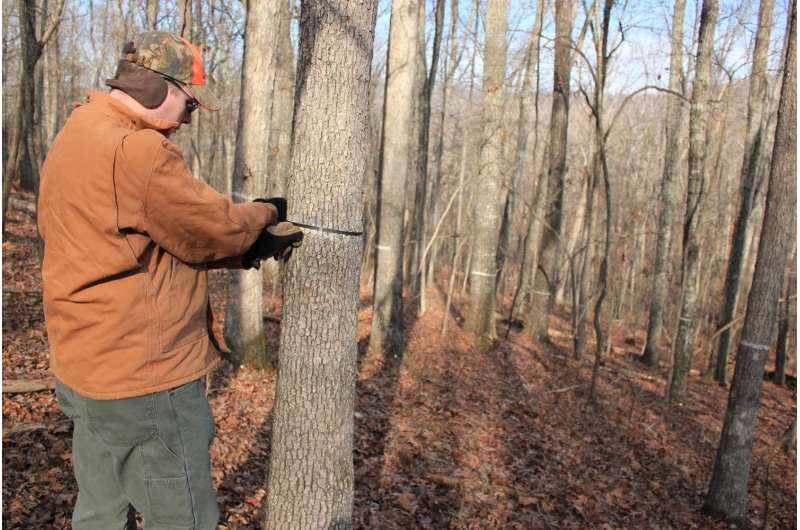New model is first to predict tree growth in earliest stages of tree life

Land managers, forestry professionals and conservationists seek to predict how trees will grow so they can better manage existing forests and regrow forests after logging operations. Previous tree growth models can reasonably predict how trees grow once they are about 20 years old and achieve "crown closure" with the trees in the forest around them. Crown closure occurs when trees in a specific area grow wide and tall enough that their canopies connect. Now, University of Missouri researchers have created a new statistical model that accurately predicts tree growth from when they are first planted until they reach crown closure.
For their study, Lance Vickers, a former doctoral student at MU, and his adviser David Larsen, a professor of forestry in the MU College of Agriculture, Food and Natural Resources, built tree growth statistical equations that describe the process of early tree growth. Larsen says being able to accurately predict how a stand of trees will grow as soon as they are planted is important for forest managers to effectively grow and maintain forests. He says the model can be applied to forests in any climate zone.
"Only about 10 percent of planted saplings will survive to reach crown closure when they are about 20 years old," Larsen said. "If forest managers can accurately predict which 200 out of 2,000 saplings will survive in a given acre of forest, those managers can spend their time more efficiently by protecting those trees and cutting back trees that will not survive, but still compete with surviving trees for resources."
To create their statistical model, Vickers and Larsen collected data from the Missouri Ozark Forest Ecosystem Project (MOFEP) which is a state-funded project that is studying Missouri forest ecosystems over the course of 100 years. Vickers and Larsen used tree growth data from dozens of trees that have grown since the project began in 1990 to develop their tree growth model. Larsen says the long-term tree growth data they collected helped to make this new model much more flexible than previous growth models.
"One of the reasons previous models are unable to predict early tree growth is the huge amount of variability that exists when a number of trees are growing near each other," Larsen said. "The angles tree grow, how much water they consume and the terrain of the land are just a few of the dozens of factors that play roles in which trees will survive past adolescence and which will not. This new model takes all of those factors into account and has helped to create a new understanding of how trees grow in proximity to each other."
The study, "The Impact of Overstory Density on Reproduction Establishment in the Missouri Ozarks - Models for Simulating Regeneration Stochastically," was published in Forest Science.
Provided by University of Missouri-Columbia



















